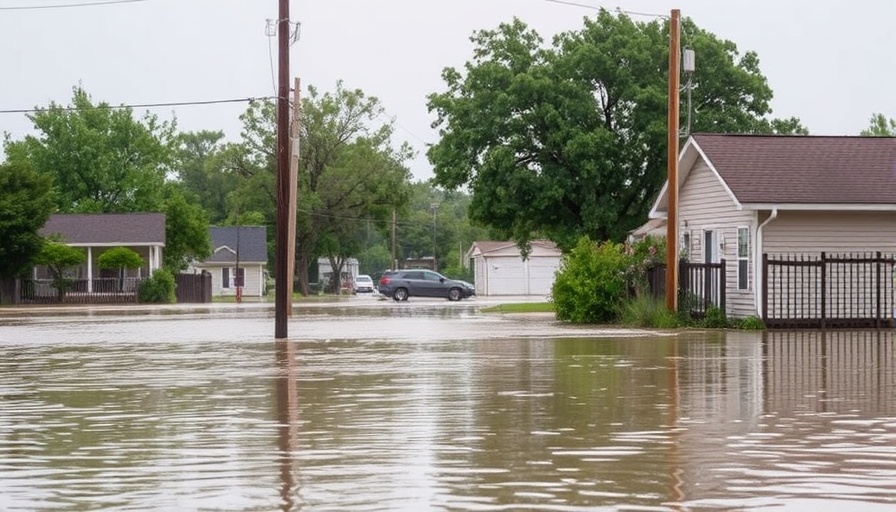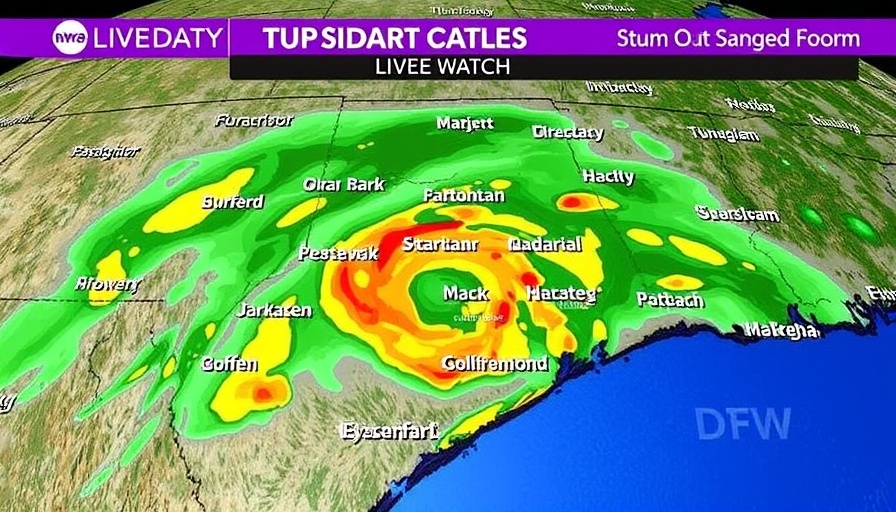
Heavy Rains Bring New Threats to Texas
As Texas battles through a weather crisis, the latest wave of heavy rains has once again paused the critical search for victims of last month’s devastating flood along the Guadalupe River. Just when hope was brewing for a resolution, the National Weather Service (NWS) predicts river levels could reach nearly 15 feet, exacerbating both the search efforts and local rescues across the region. The situation highlights the precarious balance Texas residents face as storms continue to batter the area, threatening to inundate communities already grappling with loss.
The Human Impact of Flooding
The ongoing plight reflects a tragic reality—over 160 people are still unaccounted for from the July Fourth flooding, which claimed the lives of at least 129 individuals in Kerr County alone. Authorities were quick to respond with door-to-door alerts early Sunday, underscoring the dangers posed to residents who may not be fully prepared for a sudden influx of water. Local officials and agencies are under scrutiny regarding the effectiveness of the warnings issued during such disasters and how their communication strategies can improve for future events.
Ground-Level Response and Recovery Efforts
Local authorities, including the Ingram Fire Department, have mobilized to provide immediate evacuation orders for those in the most perilous areas along the Guadalupe River. They have equipped their teams with search-and-rescue boats and airboats to facilitate rescue missions as necessary. Amidst these preparations, Governor Greg Abbott shared updates on social media, confirming that rescues are already taking place throughout counties like San Saba and Lampasas without reported fatalities—a glimmer of hope in the severity of the crisis.
Current Infrastructure and Community Support
The flooding has not just impacted individual lives but has also damaged infrastructure across several communities. Reports indicate that approximately 100 homes have suffered damage, alongside the destruction of vital ranch fencing, severely affecting local agricultural operations. This situation puts additional strain on both emergency services and community organizations tasked with providing aid and support.
Local Businesses Grapple with Natural Disasters
Texas businesses are facing their own challenges due to these floods. Business owners must navigate the precarious landscape of recovery amidst such crises, balancing the need to rebuild and operate within flooded communities. For many, the risk of natural disasters weighs heavily on their strategies moving forward. Understanding how to prepare and respond to these scenarios is essential not only for survival but also for long-term sustainability in the wake of such tragedies.
Future Preparedness: Learning from Disasters
In light of the recurring floods in Texas, it's imperative to consider future methods of disaster preparedness. Communities and governments must invest in stronger flood defenses, improved emergency communication systems, and greater public awareness campaigns to equip citizens for the unpredictable nature of these disasters. Cohesion among agencies will be vital to improve crises management, ensuring families and individuals are aware and ready for fast-approaching weather threats.
Conclusion
The situation in Texas underscores the devastating impact of severe weather on communities and individuals alike. While the search for flood victims continues to be a primary focus, it also brings forward important discussions about preparedness and resilient infrastructure. As these challenges accumulate, it is essential for authorities, businesses, and residents to work together in building more robust systems that can withstand the fury of nature.
 Add Row
Add Row  Add
Add 




 Add Row
Add Row  Add
Add 


Write A Comment